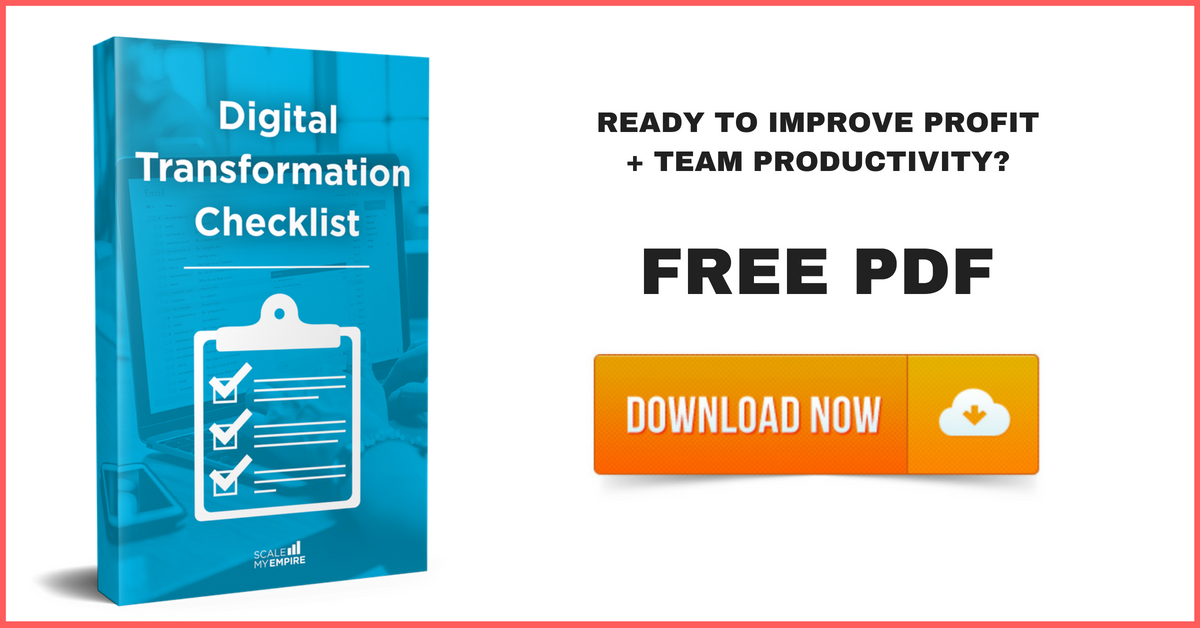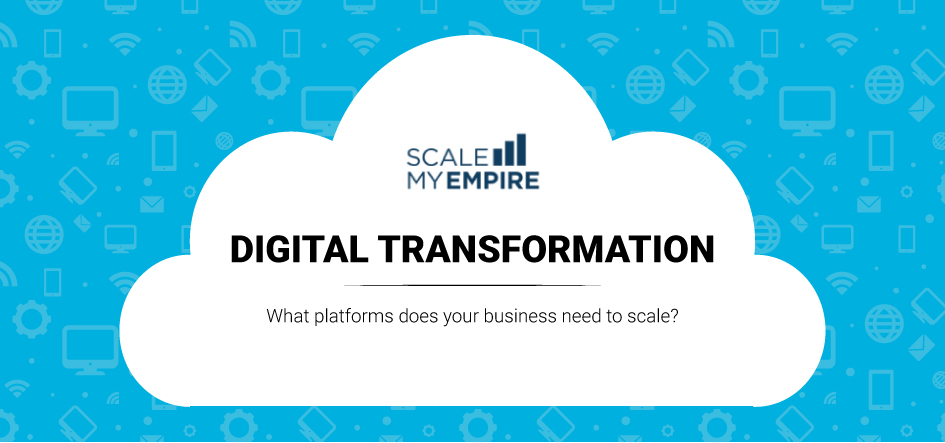
If you can’t measure, you can’t manage – 5 Must-Have Metrics to Scale Your Empire
Does your business feel like a black box? You can’t see in and none of your tools and resources can crack it… You’re not alone. In fact, over 37% of agencies feel this way when it comes to key decision making and understanding the performance of sales, operations, and the drivers of scale. You spend a lot of time developing fancy dashboards for clients to measure the success of a campaign or ROI of an initiative, but easily forget to do the same internally.
Not having a good view of the key metrics that define the success of an agency is the equivalent of flying blind. You are making decisions completely by the seat of your pants. Click To Tweet
The problem is two-fold:
- Without knowing your key metrics, you cannot see what is actually revenue, driving profit, or impacting cash flow.
- If you can’t measure these key metrics, you can’t improve them.
Not only does having these metrics clearly visible give you the intel to make smarter decisions, but it can also lead to the right, informed changes in your business to make you successful.
Still not sure how these metrics play a role in the success of your agency? Here’s an example from the life of a “seat of your pants agency owner”:
The background:
Andrew is a 45-year old agency owner who has spent 7 years in the grind to build an awesome digital marketing team of 20 people. He started out with a small team of superstars working for a classy startup and the mentality that came with it—Pure hustle. Now he’s launching an office interstate, the team has tripled in the past 4 years and he’s working with some of the largest brands in the country.
The problem:
In the last year, despite winning the work and increasing revenue, profit hasn’t kept up pace. It’s not to say he isn’t making some money, it’s the fact that suddenly margin has taken a dip and something must be going on to negatively impact it. That means less money to invest in growth, and Andrew will even have to defer the hiring of the new team lead by a few months and take on a bit of work himself just to see it through. With a successful upcoming agency, at 45 years of age, he’s also looking at a potential buyout in a few years and knows that ‘back of a napkin’ valuation is 3 times profit, so this is going to sting later.
Potential causes:
- Going over budget on client work
- No idea if team are fully committed or ‘on the bench’ waiting for work
- Overspend on external costs like contractors
- Increased cost of sales, perhaps driven by lower conversion.
With the last 12 months of timesheets and job profitability projections on separate spreadsheets, this is going to take some time to figure out. The Operations Manager, Kylie, is already pretty flogged, but hopefully, they’ll get an answer in the next 3 months.
The solution:
When you have a team of 10, a bunch of internal dashboards to tell you everything that’s going on doesn’t really seem necessary. But, to scale your empire, you must have the following 5 metrics at your fingertips or else you may lose track and end up like Andrew.
The 5 must-have metrics
These are the top 5 must-have metrics for your business. There are more, but if you are keeping your finger on the pulse of these bad boys you are 99% of the way there.
Metric #1: Job Margin

This first key metric is arguably the baseline for what you need to know to determine if your client work is successful. It answers the question, “Are we making any money?” Now, when I say ‘job’, that’s whatever it means to you—a project, a contract, or a retainer. When I say ‘margin’, I mean the percent difference between the total billed value and the cost to deliver.
Job margin is the profit you are making on any given piece of client work your team does.
Ideally, you want to be able to see your average job margin across your portfolio of work, across a particular client or vertical within your business, and then down at a per ‘job’ level. While getting the pure dollar value of your profit is important, it’s more critical to get the percentage. Ultimately, the percent margin across your portfolio essentially matches ‘gross profit’ of your business.
What to measure: The ideal measurement is to have a nice dashboard with average margin as a percentage and an indicator if margin is up or down from previous months.
Platform: Project Management system, e.g. Harvest, Mavenlink
Metric #2: Billable Utilisation

Billable utilisation is a fancy title for, “Are my people spending too much time on the bench?” In other words, are they spending enough time on billable work or too much time in meetings, coffee breaks, or just waiting to be scheduled work? This metric is what often gets agency owners unstuck. In fact, it tends to answer the puzzling question, “Why am I making money on our jobs but business profit is down?”
If job margin is telling you whether or not your client work is profitable, billable utilisation is telling you whether your team as a whole is profitable.
As your team and client work grows, assigning your team members to projects starts to get pretty complex—what with tracking who has what skills, who has capacity, and when they are needed. Plus, not everyone is a startup hustling superstar begging you for work! It’s up to your operations manager to optimise your people, skills, and capacity with demand but doing that without some kind of technology platform can be a time-consuming and flawed venture. Not having the metrics to measure utilisation to begin with means you may not even know you have a problem.
Want some tips to improve utilisation? Read this.
What to measure: A full-time team member, minus annual leave and sick days, has roughly 1840 hours a month to work on average. Utilisation is the percent of that time spent on genuine billable work. Recent studies have found most agencies’ utilisation is as low as 60%, which is a significant cause of profitability woes. Although you can never get this to 100%—unless your team members are in fact robots—you do want to aim for 80%.
Platform: Resource Planning system, e.g. Resource Guru, Mavenlink
Metric #3: Sales Conversion Rate

Sales conversion rate is your most important sales metric. Why? Because it’s a measure of how healthy your sales process is, and it is directly related to the performance of your sales team. Most people focus on tracking lead generation, which will determine the performance of a particular marketing strategy. But, if your team can’t convert, then it’s a waste of money.
The sales conversion rate is what is driving the revenue in your business. A higher conversion is maximising the leads you have to increase potential revenue.
Your sales conversion rate drives your cost of sale. If your sales conversion rate is high, the cost of sales comes down as you are selling more work for the same level of effort or cost. This is often tracked in your customer relationship management (CRM) system. If your CRM system isn’t reporting on conversion, it’s time for a new one.
Here’s some options.
What to measure: Your sales conversion rate is typically spelled out as a percentage and is the ratio of won sales to total opportunities in any given timeframe. Your chosen time frame depends on the nature of the sales duration in your business. Quarterly is good for relationship heavy sales and larger contracts, whereas monthly or weekly measurements are for more transactional businesses.
Platform: Sales Customer Relationship Management (CRM) system, e.g. Hubspot, Copper
Metric #4: Customer Satisfaction

What is at the core of a successful agency? Happy customers! You don’t need numerous studies to tell you what you already know: The best source of business is return business, followed closely by referrals. Both of these revenue sources are driven by your ability to deliver amazing work that achieves your customers’ goals.
Ultimately what counts, and what will drive return business and referrals, is whether your customer is happy. Click To Tweet
Customer satisfaction comes down to more than just technical output. It’s your entire customer experience from the sales to delivery and the human relationships that make that journey enjoyable or not. Happy customers return and refer. This work has a lower cost of sale as the prospect is warm, familiar and potentially already ingrained in your process.
What to measure: There are many ways to measure customer happiness, but the most effective is ‘net promoter score’. This is simply a technical term for the question, “How likely are your customers to refer you?” When you start delivering work with a client, use a simple survey mechanism to collect one key data point: How likely are you to refer [your business] to a friend or colleague? On a scale of 1 to 10 with anything below a 7 considered a fail, 7 to 8 being a ‘warm’ reaction, and 9 to 10 being a genuine plus. Gather all of these surveys over time, and you get an average ‘net promoter score’ or ‘customer satisfaction rating’.
Platform: NPS system, e.g. TinyNPS, Delighted
Metric #5: Revenue Growth

The final metric is one that, sadly, few professional service providers are tracking. This is even more surprising when you consider people are your product.
Team engagement scoring gives you an underlying ‘health check’ on the mental state of your team, and thus their ability to deliver.
Your team engagement feedback can go way beyond just the health of your team. It opens up a stream of communication that allows for specific comments that could indicate problems (and even solutions) with the team that would otherwise go unmentioned in the weekly meeting. As your company grows, this data will be instrumental in fighting fires before they get out of hand and ensuring future growth doesn’t alienate your highest performers.
What to measure: Start by setting a range of criteria and a scale to measure against. Some questions may be: Do you feel you are being supported by management? Do you have the right training and support materials? Or, how do you feel about the latest change initiative? The key is that it’s anonymous so your team feels safe to ‘say what they really feel’ and provide honest feedback.
Platform: Team Engagement system, e.g. Peakon, Sunlight
BONUS Metric #6: Average AR Days
The secret killer of agencies… How long does it take on average to get an invoice paid? If this is out of alignment with your payroll and supplier contract payment terms, you’ll find yourself in a cash hole very quickly.
Action Plan
- Establish a monthly process with the team to collect the information for you. Make it part of their daily routine and systems.
- Build a habit around checking the results every month, and develop an action plan around it. Schedule it into your diary.
- Investigate our recommended technology platforms to automate your reporting, save time, and improve the quality of the data.
- Share the results with your team. They are ultimately producing the work and need to be accountable for the results.
- If you need help setting up the platforms, producing the reports, or building a dashboard, book a strategy call with Scale My Empire today.
You wouldn’t have made it this far without knowing that growing a business is hard, but it will only be that much harder to scale your business if you’re essentially flying blind. Collecting the proper tools (these metrics) and actively working at prying open the black box that is your business, will lead to smarter, informed decision making and problem-solving. If your tools are too blunt for the job (e.g. spreadsheets), then have a dashboard established that will get the job done.
The big agencies, the ones you look up to, they already have this stuff covered. Not because they are soulless machines trying to churn revenue into profit, but because they actually understand that the numbers are key to creating a successful business. Knowing your metrics and improving upon them is part of a high-performing culture and high-performing business. This results in a profitable business that can reinvest in growth. A profitable business that can invest in industry changes, social changes, and personal changes.
Know your numbers!
—
Looking for an in-depth and step-by-step guide to scaling your empire? Download our Guide to Scaling today!




